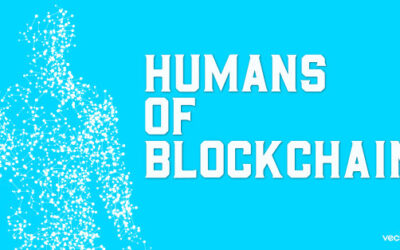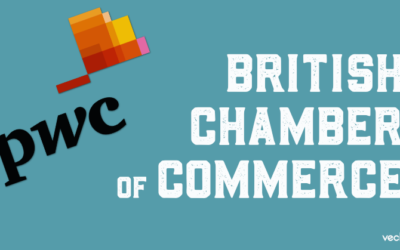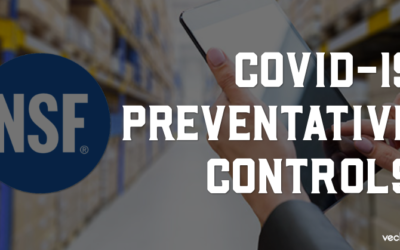
Last Spring VeChain revealed ToolChain, their new blockchain-as-as-service (BaaS) offering at their global summit in San Francisco. Over the following year, ToolChain scaled from being used to tag custom shoe designs to being incorporated into Walmart China’s food safety and traceability platform. The idea has remained consistent throughout – create a way for businesses of all sizes to incorporate public blockchain and IoT solutions without having to deal with the technicalities of a rigorous development, testing, and deployment. More importantly, the cryptocurrency-free solution saves businesses from having to manage assets and deal with regulatory headaches.

The site features an overview, a trial registration form, and a document center that go into more detail about the service. The document center is where the bulk of the info lies, with technical data about IoT hardware including sensors, chips, and the VeKey, a multi-sig enabled hardware wallet and identity solution. For those more interested in this side of ToolChain, checkout the Products & Services section.
What is a TCC?
ToolChain Credits (TCC) are not a cryptocurrency, nor do they interact with the blockchain. They are a traditional method of payment that businesses can use to create digital identities to new products (known as a VID), upload data, manage users, and other administrative needs. Since this unit of accounting doesn’t involve cryptocurrency, ToolChain is completely compliant in difficult and conservative regulatory regions that are less friendly towards digital assets. They are priced to reflect the cost of using the blockchain (in VTHO) and other development costs associated with the ToolChain platform. So what happens when a business purchases VIDs with ToolChain Credits?
The foundation is able to complete the transaction on the blockchain mainnet by supplying the VTHO themselves. Note: Every transaction on VeChain requires VTHO, it’s just a matter of who sponsors the payment. For ordinary transactions, users pay directly. However, using fee delegation, it’s possible for businesses or dApp users to pay in regular currency, and have a secondary party (in this case, VeChain themselves, pay the VTHO). The advantages of this method are plentiful:
- Simplicity – Businesses don’t need to manage VTHO or worry about price fluctuations
- Faster onboarding – Steps to deployment are significantly reduced
- Regulator-friendly – Major regions such as China don’t allow for cryptocurrency to be used as a form of payment
- Generates revenue – VeChain have a consistent revenue stream to fund future development, staff salaries, research & develop new technology, and put towards marketing, PR, and client outreach
All these advantages should lead to one thing: Faster adoption for businesses.
But wait a minute, what happened to the tokenomic model?
A few in the community were quick to disclose their concerns about how this might effect the market price of VTHO. Obviously, it would be ideal to have businesses buying VTHO and VET from secondhand markets such as OceanEx. In addition to this being the original vision for the project, this would also be the fastest way to increase the price of VET, a move most retail investors would welcome. Still, the number of businesses who would be able to manage that process, both from an operational and risk management perspective, are quite low. This would significantly reduce the potential client base for ToolChain, and with it the rate of adoption. Investors from 2017 should accept that the cryptocurrency side of the blockchain industry has not progressed at the pace we originally expected, with cryptocurrency largely failing to gain any traction over the last few years, especially as far as commercial enterprises go.
From a long-term perspective, VeChain must do what’s best for VeChain (the company). If VeChain can’t earn revenue, then development slows and the whole ecosystem loses momentum. On the flip side, if they are earning substantial revenue, expanding the ecosystem will be much easier, as well as securing the future sustainability of the project. This follows the theory that VET token price can’t be continually pushed up by the foundation, and must be pulled by organic demand for VTHO. But exactly how much is needed to accomplish that?
Some quick math shows us that with a contract call requiring a minimum of 51 VTHO, and 70% of that burned, we are left with a minimum of around 35 VTHO burned per ToolChain transaction. To match the daily generation rate, ToolChain would need somewhere in the range of 1 million transactions per day. That’s not an unthinkable amount, and certainly plausible if a few large clients were onboarded. Still, VeChain’s 10th Financial Report shows that VeChain controls around 25% of the total supply, meaning that they are probably sitting on a fairly large supply of VTHO as well. Skeptics might point out that they have enough to fund a few hundred thousand transactions per day without needing to buy on the open market for the foreseeable future. This isn’t a great sign for people focused on the short-term demand for VTHO, unless third parties and community projects can increase the burn rate.
We are left with two conclusions – the first being that ToolChain is well-positioned to become one of the top public BaaS platforms on the market, with a simplified, regulatory-friendly software and IoT hardware suite of technology that is easy to onboard new clients. On the other hand, VET holders are forced, at least for the immediate future, to wait for a major jump in transactions, before we can see open market VTHO consumed by ToolChain. This boils down to a simple case of long-term patience versus those demanding instant gratification: a game VET holders should be all-too-familiar with.
Want to read more? A complete Twitter update was given by VeChain’s Jason Rockwood and summarized on Reddit here.





